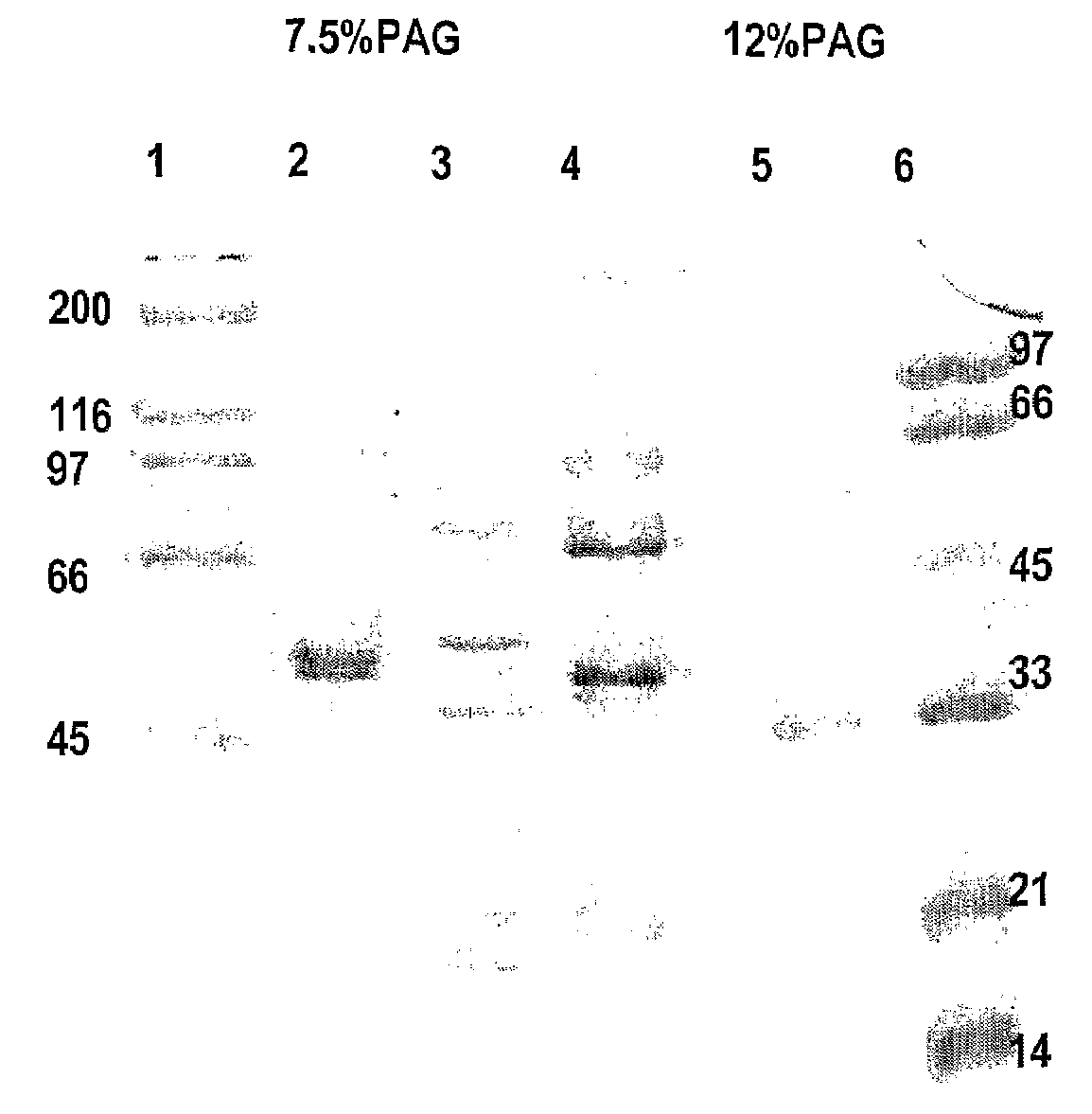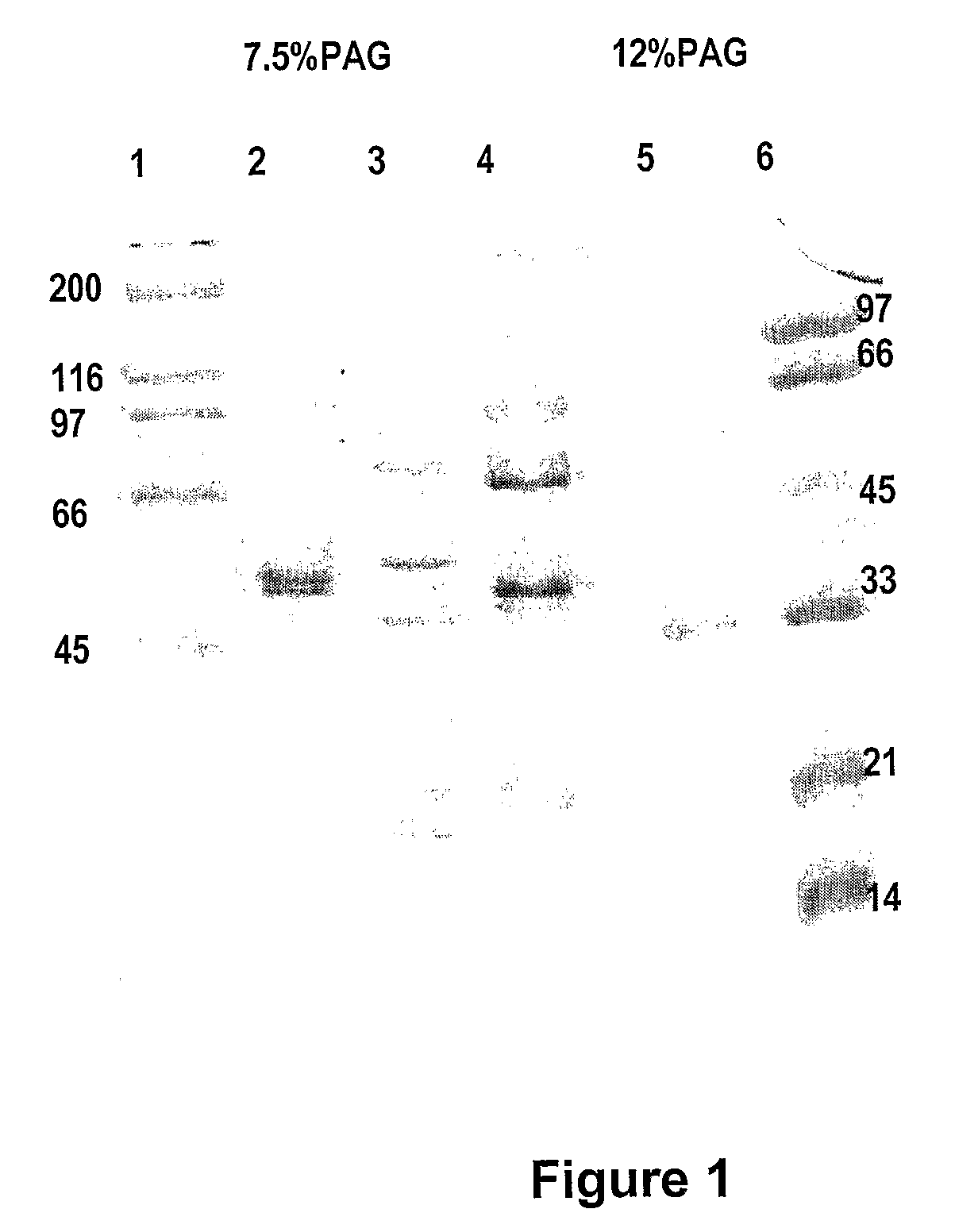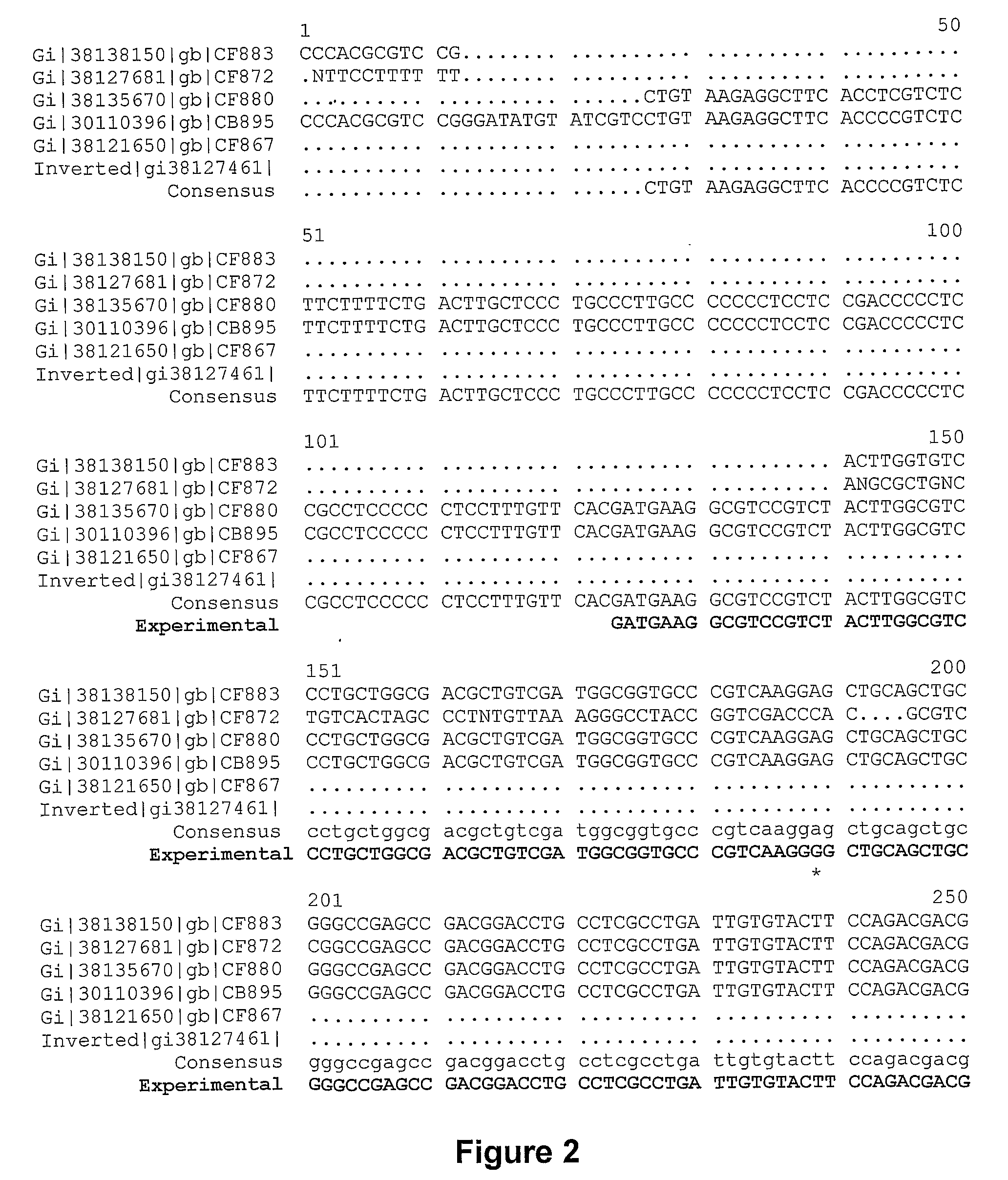Endo-N-Acetyl-Beta-D-Glucosaminidase Enzymes of Filamentous Fungi
a technology of endonacetylbetadglucosaminidase and filamentous fungi, which is applied in the direction of immunoglobulins, peptides, biological water/sewage treatment, etc., can solve the problems of little attention to the possible role of endonacetylbetadglucosaminidase enzymes in the physiology of cells producing, and achieve enhanced glycosylation, enhanced stability, and enhanced glycosylation
- Summary
- Abstract
- Description
- Claims
- Application Information
AI Technical Summary
Benefits of technology
Problems solved by technology
Method used
Image
Examples
example 1
Production of Endo T Using T. reseei
[0054]T. reesei was grown in corn steep liquor enriched medium as described (Hui et al., (2001) J. Chrom. B 752, 349-368). Endo T activity was monitored on filtered supernatant from growing cells. Endo T Activity was present from the beginning of the cultivation. Because of the low production of Endo T activity in the medium (2.51 mU / ml), culture growth was stopped just before the secretion of cellulases. Endo T is an enzyme found in the culture medium and not in the cells, indicating that Endo T is secreted.
example 2
Purification of Endo T and Characterization
[0055]Using Man5GlcNAc2-RNase B as substrate, the endo-D-N-acetylglucosaminidase was purified 1300-fold from the culture medium of T. reesei (Table 1). The Avicel adsorption step was efficient in removing CBM containing proteins (cellulases) and facilitated the subsequent purification but resulted in a substantial loss of activity (61%, see Table 4). This is probably due to affinity of the Endo T protein for the glycosylated cellulases bound to Avicel. However, an 14-fold enrichment was obtained during this first purification step. The non-bound fraction was applied to a DEAE-sepharose-FF column (10×1 cm), which was subsequently eluted with a linear gradient of 5 mM NH4OAc to 300 mM NH4OAc, pH 5. Proteins were monitored at 280 nm, and the Endo T activity was assayed with the FITC-labelled glycoproteins (data not shown). The purification is also monitored by activity measurements on invertase (10 μl of the fractions were incubated with 10 μl...
example 3
Identification of the Protein and cDNA Sequence of T. reesei Endo T
a) Sequence Information Obtained by Enzymatic and Chemical Fragmentation of the Protein
[0061]Internal peptide sequences of Endo T were determined by enzymatic and chemical fragmentation and MS identification. The most informative results are depicted in Table 2.
TABLE 2Partial sequence information of T. reeseiEndo T obtained by digestion underdifferent conditionsMass (Da)SequenceA2099.92TIDSPDSATFEHYY[SEQ ID NO: 18]2948.32D......DIDVEQXXSQQGIDR[SEQ ID NO: 19]B1082.00AEPTD[SEQ ID NO: 20]1306.33EIIR[SEQ ID NO: 21]2283.88TIDSPDSATFEHYYXXXR[SEQ ID NO: 22]3155.22DAIVNFXXXXXXIDVEQXXXQQ[SEQ ID NO: 23]GIDRC2079.113186.63......DSPDSATXX.....[SEQ ID NO: 24]3212.34VGGAAPGSFNTQTIDSPDSATF[SEQ ID NO: 25]EHYY...3230 = 32.......TIDSPDSATFEH...[SEQ ID NO: 26][0062]A. Trypsin digest: Peptides and MS / MS fragmentation data obtained after guanidinylation.[0063]B. Trypsin digest: Peptides and MS / MS fragmentation data obtained after guanidi...
PUM
| Property | Measurement | Unit |
|---|---|---|
| Fraction | aaaaa | aaaaa |
| Current | aaaaa | aaaaa |
| Current | aaaaa | aaaaa |
Abstract
Description
Claims
Application Information
 Login to View More
Login to View More - R&D
- Intellectual Property
- Life Sciences
- Materials
- Tech Scout
- Unparalleled Data Quality
- Higher Quality Content
- 60% Fewer Hallucinations
Browse by: Latest US Patents, China's latest patents, Technical Efficacy Thesaurus, Application Domain, Technology Topic, Popular Technical Reports.
© 2025 PatSnap. All rights reserved.Legal|Privacy policy|Modern Slavery Act Transparency Statement|Sitemap|About US| Contact US: help@patsnap.com



